What's New
Displaying results 4011 - 4020 of 4052
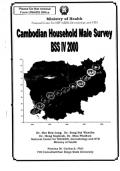
Resource | Publications,
The objective of the 2000 round of Behavioral Surveillance Survey (BSS) was to provide a comprehensive description of sexual behavior among men in Cambodia, to gain a better understanding of the extent of high-risk behavior in urban and rural population males.
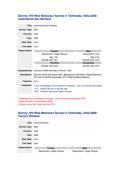
Resource | Data Sheets,
Sections of the final report cover: Background Information, Sexual Behavior, STD and HIV/AIDS Knowledge, STD Health Seeking Behavior.
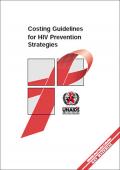
Resource | Publications,
It is essential to know the costs of different prevention strategies to be able to set public policy priorities in the fight against AIDS. Hence this important costing tool, a new edition of Costing guidelines for HIV prevention strategies, first issued by UNAIDS in 1998. The guidelines now contain cost analysis worksheets and cover injecting drug users.
In many developing countries economists are scarce, but these guidelines make it possible for other professionals such as accountants and planners to analyse costs. Such analyses must be combined with a judgement of an intervention's outcome. That an intervention has a low cost does not necessarily mean it is worth while from an economic perspective; for example, if it does not slow the spread of the disease or has unwanted side-effects that outweigh benefits.
Resource | Publications,
Male sex workers (MSWs) comprise an important group at risk of HIV infection in South Asia. There are few published studies about their HIV or STD prevalence, numbers, socio-demographic characteristics or risk behaviors, although there is a growing literature on the more general category of men who have sex with men (MSM) in South Asia. Most published studies are concerned with describing behavioural risk and issues of identity and gender, but we have found none that evaluates or describes HIV prevention interventions. In Bangladesh, however, considerable progress has been made in research, prevention, HIV/syphilis and behavioral surveillance surveys (BSS) among MSM in general and among MSWs in particular. BSS are repeated quantitative surveys carried out in specific populations to track changes in the frequency of behavioural risk factors associated with the spread of HIV infection. The methodology of BSS is semi-standardized and allows comparison across countries and between samples within a country. Probability sampling, once established in sentinel populations, permits comparisons across years and can examine the effects of exposure to an intervention or to a package of interventions in a particular location.
Data from the Bangladesh behavioural surveillance demonstrate the impact of a behavioural intervention on MSWs in Dhaka. Nonetheless, overall condom use remains low. MSWs in Bangladesh remain at high risk in an environment with high levels of syphilis, but continuing low HIV prevalence.
This paper presents selected results of several studies on MSWs in Dhaka, Bangladesh conducted between 1998 and 2000.
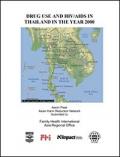
Resource | Publications,
In Thailand, estimates indicate that 984,000 persons have been infected since 1988 with HIV and that approximately 289,000 people have died of AIDS. Over 695,000 persons are now living with HIV. At the end of 1999, national HIV sentinel surveillance showed that prevalence had declined among Army conscripts, female direct/indirect sex workers, and pregnant women, but had increased among injecting drug users, from 39% in 1989 to 54.1% by June 1999.
Harm reduction for drug users has been a notable gap in AIDS initiatives. To date there is only one program located among Akha villages in Chiang Rai province. In addition, although a link between use of methamphetamine (or ATS) and HIV risk has yet to be clarified, ATS use has increased dramatically and has the potential to create serious health consequences.
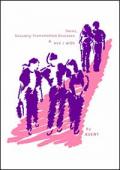
Resource | Tools,
STD stands for Sexually Transmitted Disease (sometimes called Sexually Transmitted Infection). This is an infection which can be caught by having sexual contact with someone who is infected. This can be vaginal, oral or anal sex, although other types of touching can pass some STDs - for example, some STDs (such as Herpes and HPV) can be caught by touching the infected areas of someone's body and then touching your own genitals (private parts). There are quite a lot of different STDs.
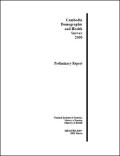
Resource | Publications,
The main objective of the CDHS 2000 was to obtain current information on demographic conditions, family planning, infant and child mortality, domestic violence, and health related information such as breastfeeding, antenatal care, child immunization, children’s diseases and HIV/AIDS. Also the questionnaires are designed to evaluate the nutritional status of mothers and children and measure the prevalence of anemia.
This report presents the preliminary findings from the CDHS 2000 that are expected to be used by policy makers to evaluate the demographic and health status of the Cambodian population in order to formulate appropriate population and health policies and programs in Cambodia. The final report of the CDHS as well as the summary report containing more detailed findings will be published in the first half of 2001.
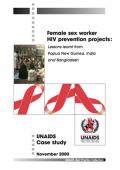
Resource | Publications,
The set of case studies in this collection emerged from a session entitled Best Practices in Female Sex Worker Projects held at the Fourth International Congress on AIDS in Asia and the Pacific in Manila, October 1997. Preparation for the session began in May 1997 when UNAIDS sponsored an effort to learn about sex worker projects in the region. Lists of known potential projects were elicited from sex work networks, well-connected individuals and researchers. A call for responses was placed on the SEA-AIDS list server.
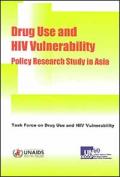
Resource | Publications,
Effective prevention programmes have reduced HIV risk and lowered or stabilised HIV transmission rates in some countries of Asia. At the same time, however, warning flags have been raised after information from new data collection efforts have revealed that injecting drug use is spreading and that condom use is uncommon, including among clients of sex workers and men who have sex with men. In many places prevention efforts are hampered by the shame and stigma attached to AIDS.
Drug use and HIV vulnerability remain issues of great concern for many countries in Asia and the Pacific because surveys indicate that in some geographical areas more than sixty per cent of all injecting drug users are HIV- positive. In several Asian countries, injecting drug users represent the largest group of those who are HIV-positive.
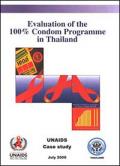
Resource | Publications,
From the earliest days, many Thai public health workers and researchers had feared that widespread sex work would come to dominate the Thai epidemic, a viewpoint strongly validated by the available data from the early 1990s. Thus, even as early as 1989, a new approach to promoting condom use in commercial sex was being pioneered in Ratchaburi province: the 100% Condom Programme.
The programme addressed the observation that sex work establishments requiring condom use or sex workers insisting on condom use would often lose clients and money to those who did not. Because many clients did not want to use condoms, there were economic disincentives for establishment owners who promoted safer behaviour at their establishments: men could simply go to another establishment or to a sex worker who did not require condoms. Regional Communicable Disease Control officials in Ratchaburi in 1989 realized that one solution to this fundamentally economic problem was to require that all establishments and sex workers in the province use condoms in every sex act.





